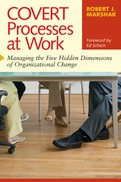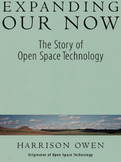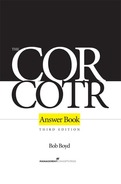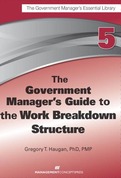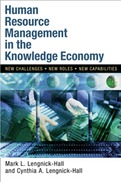Search Results: "building the future"
Results 643-648 of 1218
The first and only guidebook that specifically outlines methodologies for diagnosing and dealing with all of the “hidden” or covert factors that can subtly sabotage even the most meticulously planned change processes.Organizational change initiatives often fail because they focus exclusively on the rational, overt aspects of change, overlooking the powerful role played by concealed or irrational factors. It's well known that these covert processes--such as hidden agendas, blind spots, office politics, tacit assumptions, secret hopes, wishes and fears--frequently sabotage change efforts, but up until now nobody has offered a rigorous, consistent way of identifying and dealing with them.
Drawing on over thirty years of experience as an organizational change consultant to global corporations and government agencies, Robert J. Marshak shows precisely how to bring these hidden processes to light and deal with their negative impact. Marshak identifies five different dimensions of covert processes, presents an integrated model to explain the ultimate source of all of them, and shows how to diagnose whether any covert processes might be at work in your organization. He then offers specific tools and techniques for engaging and managing these "under-the-table" processes and for creating the kind of organizational environment in which such hidden dynamics are unable to flourish. Covert Processes at Work is a comprehensive and practical guide that managers, leaders, and consultants can use to deal with the hidden dynamics that are often at the root of many organizational problems.
- The first book to offer an integrated approach for recognizing and dealing with the hidden processes that sabotage organizational change efforts
- Identifies five different dimensions of these covert processes
- Offers a comprehensive approach that can be used to address any type of covert process
Expanding Our Now
1997
Open Space Technology (OST) is an effective, economical, fast, and easily repeatable strategy for organizing meetings of between 5 and 1,000 participants. First developed in 1984, it has now been used around the world with all types of organizations including corporations, community groups, government agencies, schools, and churches.
OST produces better meetings and helps groups achieve such organizational goals as self-managed work groups, distributed leadership, and utilizing diversity quickly and without training.
In Expanding Our Now, OST creator Harrison Owen offers numerous examples to illustrate the evolution of OST and explores what it is, how it developed as a process for meeting management, and how and why it works all over the world, for groups of all sizes dealing with a vast range of issues. Owen shows how OST can move organizations to higher levels of performance, without elaborate training or professional facilitators.
OST produces better meetings and helps groups achieve such organizational goals as self-managed work groups, distributed leadership, and utilizing diversity quickly and without training.
In Expanding Our Now, OST creator Harrison Owen offers numerous examples to illustrate the evolution of OST and explores what it is, how it developed as a process for meeting management, and how and why it works all over the world, for groups of all sizes dealing with a vast range of issues. Owen shows how OST can move organizations to higher levels of performance, without elaborate training or professional facilitators.
- Open Space Technology is an effective, economical, fast, and easily repeatable strategy for organizing meetings of between 5 and 1,000 participants
- The originator of the Open Space Technology process explores what it is and how it developed as a process for meeting management
Get the edge over the competition for government contracts!
In the battle for government contracts, seize the competitive advantage with Winning Government Business: Gaining the Competitive Advantage with Effective Proposals, Second Edition.
Includes complimentary access to the Winning Government Business website.
In the battle for government contracts, seize the competitive advantage with Winning Government Business: Gaining the Competitive Advantage with Effective Proposals, Second Edition.
Includes complimentary access to the Winning Government Business website.
The Classic COR/COTR Reference Updated!
Incorporating the most important changes to regulations affecting federal acquisition, this third edition of The COR/COTR Answer Book remains the “go to” reference for CORs, COs, and other acquisition professionals.
Included in this third edition are:
• Updated and expanded coverage of the policies and regulations on government property
• Revised dollar thresholds that comply with the most recent changes
• In-depth coverage of performance-based payments
Coverage of the new FAR rules on COR certification details the elements of this new three-tiered mandatory certification program, along with the requirements on training, experience, and continuous learning.
The easy-to-use question and answer format facilitates quick access to specific information. In this third edition, The COR/COTR Answer Book continues a tradition of trusted service to acquisition professionals carrying out their vital role in contract planning, formation, and administration.
Incorporating the most important changes to regulations affecting federal acquisition, this third edition of The COR/COTR Answer Book remains the “go to” reference for CORs, COs, and other acquisition professionals.
Included in this third edition are:
• Updated and expanded coverage of the policies and regulations on government property
• Revised dollar thresholds that comply with the most recent changes
• In-depth coverage of performance-based payments
Coverage of the new FAR rules on COR certification details the elements of this new three-tiered mandatory certification program, along with the requirements on training, experience, and continuous learning.
The easy-to-use question and answer format facilitates quick access to specific information. In this third edition, The COR/COTR Answer Book continues a tradition of trusted service to acquisition professionals carrying out their vital role in contract planning, formation, and administration.
The Government Manager's Guide to the Work Breakdown Structure
The work breakdown structure (WBS) is a cornerstone of managing any project. Every government manager should understand how to construct a WBS in the project or program lifecycle. This quick reference presents the fundamental WBS principles, pragmatic steps for the government manager to follow in developing a project WBS, and a checklist for the project manager to use in reviewing a WBS. In addition, DOD recommendations for avoiding pitfalls in constructing a WBS are highlighted.
The work breakdown structure (WBS) is a cornerstone of managing any project. Every government manager should understand how to construct a WBS in the project or program lifecycle. This quick reference presents the fundamental WBS principles, pragmatic steps for the government manager to follow in developing a project WBS, and a checklist for the project manager to use in reviewing a WBS. In addition, DOD recommendations for avoiding pitfalls in constructing a WBS are highlighted.
Offers a fundamentally new conceptual model for the human resource function to meet the challenges of the knowledge economy
Provides concrete suggestions for implementing this model, including numerous examples of effective practices from leading-edge firms
Synthesizes current thinking on knowledge management and intellectual capital and identifies how human resource management can make a value-added contribution
As more organizations recognize the importance of intellectual capital and knowledge management to competitive success, you would expect human resources (HR) to move to the forefront of organizational leadership. Yet, to the contrary, HR continues to be criticized for its operational and bureaucratic focus and its inability to keep up with changes in the environment.
Human Resource Management in the Knowledge Economy examines how human resource management must change if it is to remain a vital part of the organization. The Lengnick-Halls show how HR departments can move beyond a simple operational focus on attracting, selecting, developing, retaining, and using employees to a more strategic focus on managing human capital and managing knowledge.
The book identifies the most important features of the knowledge economy and details four new roles HR must adopt in order to help organizations succeed in this new environment: human capital steward, knowledge facilitator, relationship builder, and rapid deployment specialist. Each of these roles is defined and described in detail using examples from leading-edge businesses. Human Resource Management in the Knowledge Economy describes how human resource management has evolved and continues to evolve to meet the increasing demands of organizations for sources of competitive advantage.Offers a fundamentally new conceptual model for the human resource function to meet the challenges of the knowledge economy
Provides concrete suggestions for implementing this model, including numerous examples of effective practices from leading-edge firms
Synthesizes current thinking on knowledge management and intellectual capital and identifies how human resource management can make a value-added contribution
As more organizations recognize the importance of intellectual capital and knowledge management to competitive success, you would expect human resources (HR) to move to the forefront of organizational leadership. Yet, to the contrary, HR continues to be criticized for its operational and bureaucratic focus and its inability to keep up with changes in the environment.
Human Resource Management in the Knowledge Economy examines how human resource management must change if it is to remain a vital part of the organization. The Lengnick-Halls show how HR departments can move beyond a simple operational focus on attracting, selecting, developing, retaining, and using employees to a more strategic focus on managing human capital and managing knowledge.
The book identifies the most important features of the knowledge economy and details four new roles HR must adopt in order to help organizations succeed in this new environment: human capital steward, knowledge facilitator, relationship builder, and rapid deployment specialist. Each of these roles is defined and described in detail using examples from leading-edge businesses. Human Resource Management in the Knowledge Economy describes how human resource management has evolved and continues to evolve to meet the increasing demands of organizations for sources of competitive advantage.
- Offers a fundamentally new conceptual model for the human resource function to meet the challenges of the knowledge economy
- Provides concrete suggestions for implementing this model, including numerous examples of effective practices from leading-edge firms
- Synthesizes current thinking on knowledge management and intellectual capital and identifies how human resource management can make a value-added contribution


